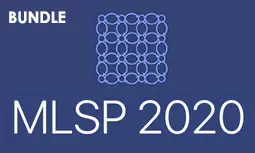Block-wise Minimization-Majorization algorithm for Huber''s criterion: sparse learning and applications
Ollila Esa,Ammar Mian
-
Members: FreeSPS
IEEE Members: $11.00
Non-members: $15.00Length: 15:43
21 Sep 2020
Huber's criterion can be used for robust joint estimation of regression and scale parameters in the linear model. Huber's (Huber, 1981) motivation for introducing the criterion stemmed from non-convexity of the joint maximum likelihood objective function as well as non-robustness (unbounded influence function) of the associated ML-estimate of scale. In this paper, we illustrate how the original algorithm proposed by Huber can be set within the block-wise minimization majorization framework. In addition, we propose novel data-adaptive step sizes for both the location and scale, which are further improving the convergence. We then illustrate how Huber's criterion can be used for sparse learning of underdetermined linear model using the iterative hard thresholding approach. We illustrate the usefulness of the algorithms in an image denoising application and simulation studies.



